TEC Science Classroom | Small Wires, Big Intricacies! TEC Wire Material Selection Guide
In electronic device manufacturing, the choice of conductors directly impacts product performance, safety, and reliability. Whether in precision instruments or household appliances, conductors play a crucial role in power transmission and signal connectivity. So, how do you choose the right conductor when customizing thermoelectric coolers? This article will introduce you to five major types of wire: bare wire, PTFE wire, FEP wire, PVC wire, and silicone wire.
1. Tinned copper wire: high conductivity and oxidation resistance
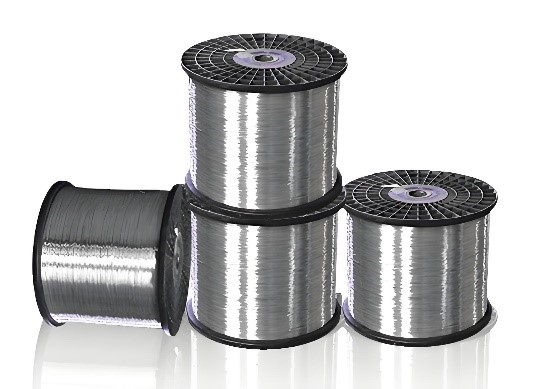
① Strong conductivity: The copper core provides extremely low resistivity, ensuring efficient power transmission;
② Strong anti-oxidation ability: The tin layer effectively prevents the copper conductor from oxidizing and prolongs its service life;
③Easy to solder: The tin layer improves wettability, making soldering smoother and improving production efficiency;
④Corrosion resistance: can adapt to complex environments such as humidity and high temperature, and has high reliability.
2. PTFE wire: the first choice for high temperature environment
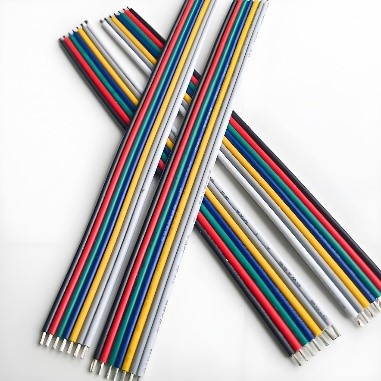
Polytetrafluoroethylene (PTFE) insulated wires possess exceptionally high-temperature resistance, capable of long-term operation within a temperature range of -70°C to +260°C. They are widely used in high-reliability applications such as aerospace, military equipment, medical devices, and high-temperature industries. FerroTec's PTFE material used in the production of semiconductor coolers meets national military standards and has earned widespread recognition from customers worldwide for its high reliability and stability.
① Extremely strong chemical stability: Highly resistant to strong acids, strong alkalis and organic solvents, not easily corroded;
②Excellent electrical properties: low dielectric constant and low dielectric loss, suitable for high-frequency and high-speed signal transmission;
③Low friction coefficient: Smooth surface makes it easy to pass pipes and wires, improving assembly efficiency;
④Strong aging resistance: strong resistance to UV rays and aging, long service life.
3. FEP line: high cost performance
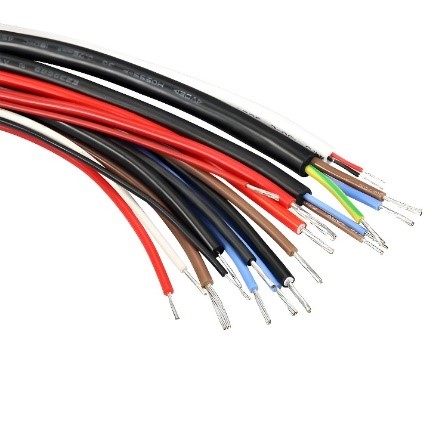
Fluorinated ethylene propylene (FEP) is a modified version of PTFE. Its operating temperature range is -70°C to +200°C. While its maximum temperature is slightly lower than that of PTFE, it is still sufficient for most industrial and electronic applications. Overall, FEP not only retains the performance characteristics of PTFE but also offers better processing conditions and cost advantages. It is currently widely used in data communication cables, medical equipment, and other fields.
① Low cost: The raw material and processing costs are lower than PTFE, with higher cost performance;
②Easy to weld: good light transmittance, low melt viscosity, suitable for injection molding and extrusion molding; better flexibility than PTFE, more resistant to repeated bending;
③ Comply with fire safety standards: Excellent flame retardant performance, low smoke release during combustion, and comply with fire safety standards.
4. PVC line: economical and practical
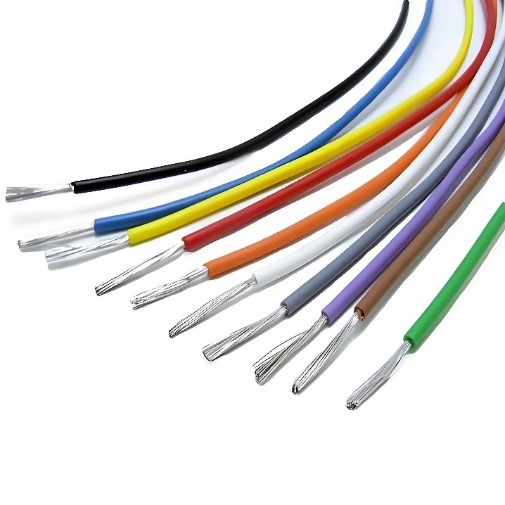
Polyvinyl chloride (PVC) insulated wire is the most widely used and lowest-cost of these five types of wire materials. Its operating temperature range is -40°C to +105°C. Due to its stable performance and high cost-effectiveness, it has become the "standard" wire for most commercial products.
① Low cost: low cost of raw materials, mature production technology, and high overall cost performance.
②Good flexibility: easy to bend and install, and adaptable to complex wiring environments.
③ Strong wear resistance: The insulation layer is strong and durable, and has strong resistance to mechanical wear and damage.
④Good flame retardancy: It has self-extinguishing properties and can effectively inhibit the spread of flames.
⑤ Support customization: A variety of colors and hardness can be adjusted by adding additives, and special properties such as halogen-free and oil-resistant can be customized.
Note: PVC releases harmful gases and smoke like hydrogen chloride when burned, posing a safety hazard. Therefore, in confined spaces, crowded places, or locations with strict environmental requirements, it is recommended to use safer alternative materials such as low-smoke zero-halogen (LSZH).
5. Silicone wire: strong flexibility
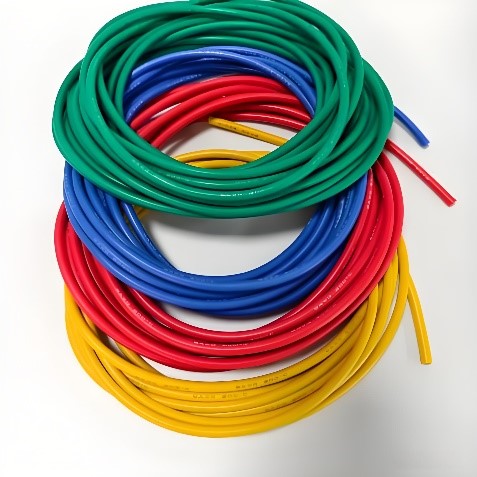
Silicone rubber insulated wire (also known as silicone wire) is characterized by its strong flexibility. Its operating temperature range is between -60℃ and +200℃, making it particularly suitable for high-temperature environments and mobile scenarios. It has been widely used in medical equipment, household appliances, industrial machinery, LED lighting and other fields.
①Good flexibility: It can remain stable even in repeated bending and vibration environments, and its service life far exceeds that of PVC, FEP and other materials;
②High temperature resistance: It can work for a long time in an environment up to 200℃, meeting the use requirements of TEC modules and high-temperature equipment;
③Safety and environmental protection: non-toxic and odorless, in line with food-grade and medical-grade application standards, suitable for occasions with high hygiene requirements;
④Ozone/UV resistance: It has good ozone and UV resistance, suitable for use in outdoor or complex industrial environments.
TEC Wire Selection Guide:
In summary, when selecting TEC conductors, we need to consider several key factors and reasonably match them to the application scenario:
① Temperature: Select wire material according to the ambient temperature. PTFE and silicone wires are preferred for high-temperature environments, while PVC wires with higher cost performance can be considered for normal-temperature applications.
②Flexibility: For applications that require frequent movement or bending, silicone wire and specially structured FEP wire are recommended.
③Chemical environment: In situations where chemical solvents or corrosive substances are present, it is recommended to use fluoroplastics (PTFE wire/FEP wire) with stronger chemical stability.
④ Cost: For daily applications, PVC wire with the lowest cost can be used first; for high-performance scenarios, special wires such as PTFE, FEP, and silicone wire are recommended.
In this lecture, we learned about the characteristics and application scenarios of five common types of TEC conductors. Choosing the right conductor is crucial for ensuring stable TEC operation. Therefore, understanding the characteristics of each type of conductor and considering actual requirements such as temperature, environment, and cost is crucial for matching the appropriate conductor to the thermoelectric cooler in practical applications.



